How to Sell Affiliate Products on Shopify in 2024
Want to boost your Shopify store’s earnings? Selling affiliate products on Shopify is a smart way to increase your revenue without stocking inventory.
Imagine leveraging curated affiliate products to attract more customers and enhance your conversion rates. This complete guide will walk you through exactly how to sell affiliate products on Shopify in 2024
What Is The Affiliate Marketing

Affiliate marketing is an online strategy where you promote other people’s products to earn a commission. It’s a great way to make extra income from your Shopify store without having to create your own products.
So, How Does It Work?
Affiliate marketing works by leveraging a network of relationships. You find products your audience would love, then promote them through blog posts, social media, or your website. Each product has a special tracking link that’s unique to you. You earn a commission when someone clicks your link and buys the product!
How to Sell Affiliate Products on Shopify
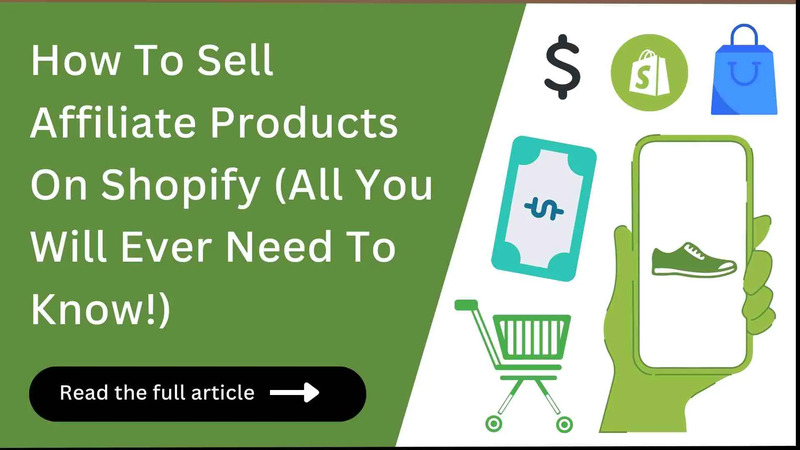
Step 1: Select Your Affiliate Products
The first step is to choose the affiliate products you want to feature on your Shopify store. It’s best to select products that your customers would like. For example, think about workout clothes, supplements, or fitness trackers if you sell fitness equipment. Shopify has lots of popular items you can sell, like:
- Clothing
- Pet supplies
- Travel accessories
- Health and beauty products
- Exercise equipment
- Smartphone accessories
Step 2: Create a Shopify store to sell affiliate products
Once you’ve chosen your affiliate products, the next step is to build your Shopify store. We have a comprehensive tutorial available if you need help creating the store.

Step 3: Add affiliate products to your Shopify store
After setting up your Shopify store, the next step is adding your affiliate products.
Add your products
- Go to Shopify admin and click “Product” > “Add product.”
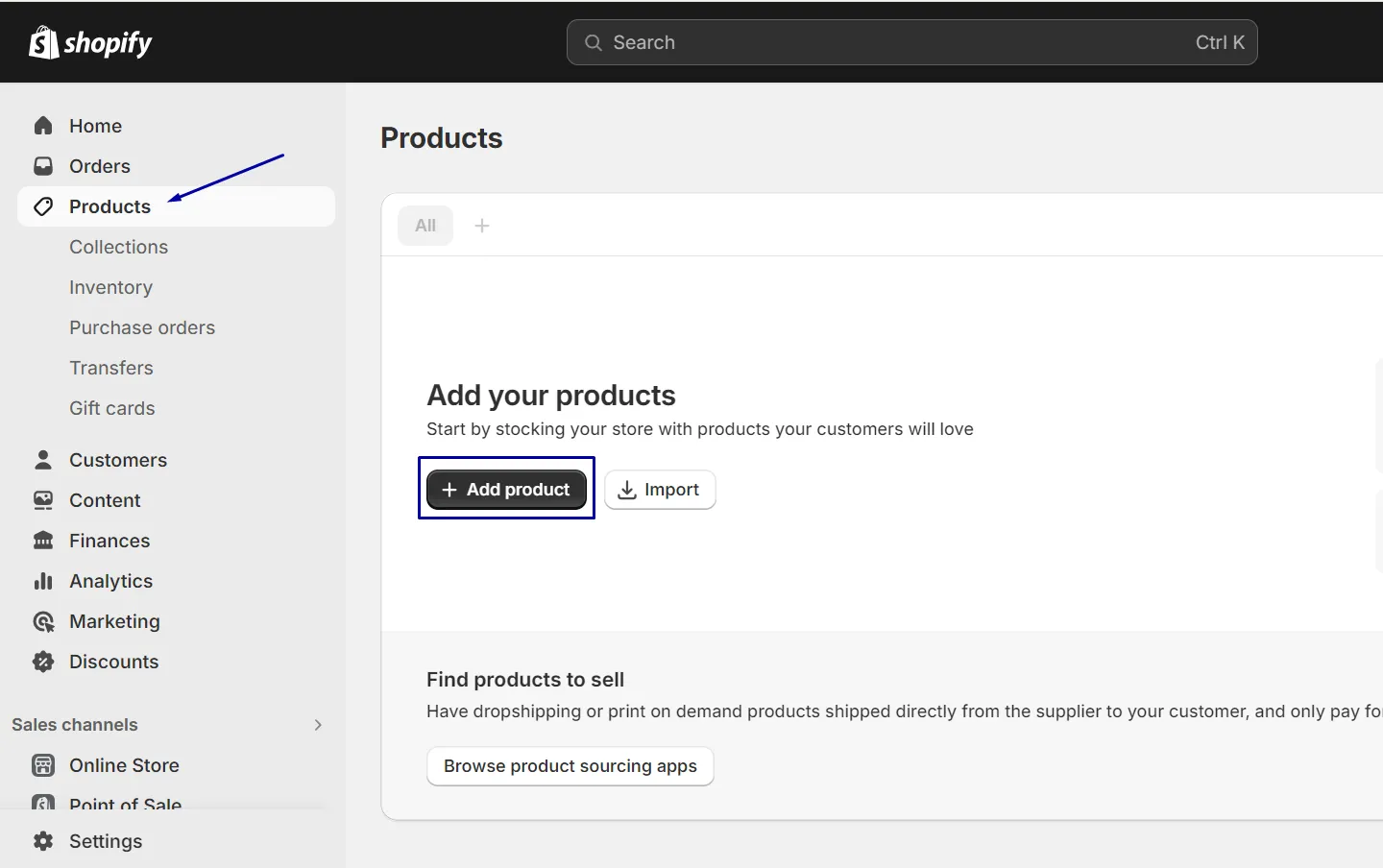
- Create a product listing for each affiliate item. Then, write clear and compelling descriptions, highlighting the unique features and benefits to help customers understand the product’s value.

Replace the “Add to cart” button with a customer link
Replace the “Add to Cart” button with a link that directs customers to the affiliate website. This button should include your unique affiliate tracking code to ensure you get your commission.
- Go to “Online store” > and click the “Themes” button.
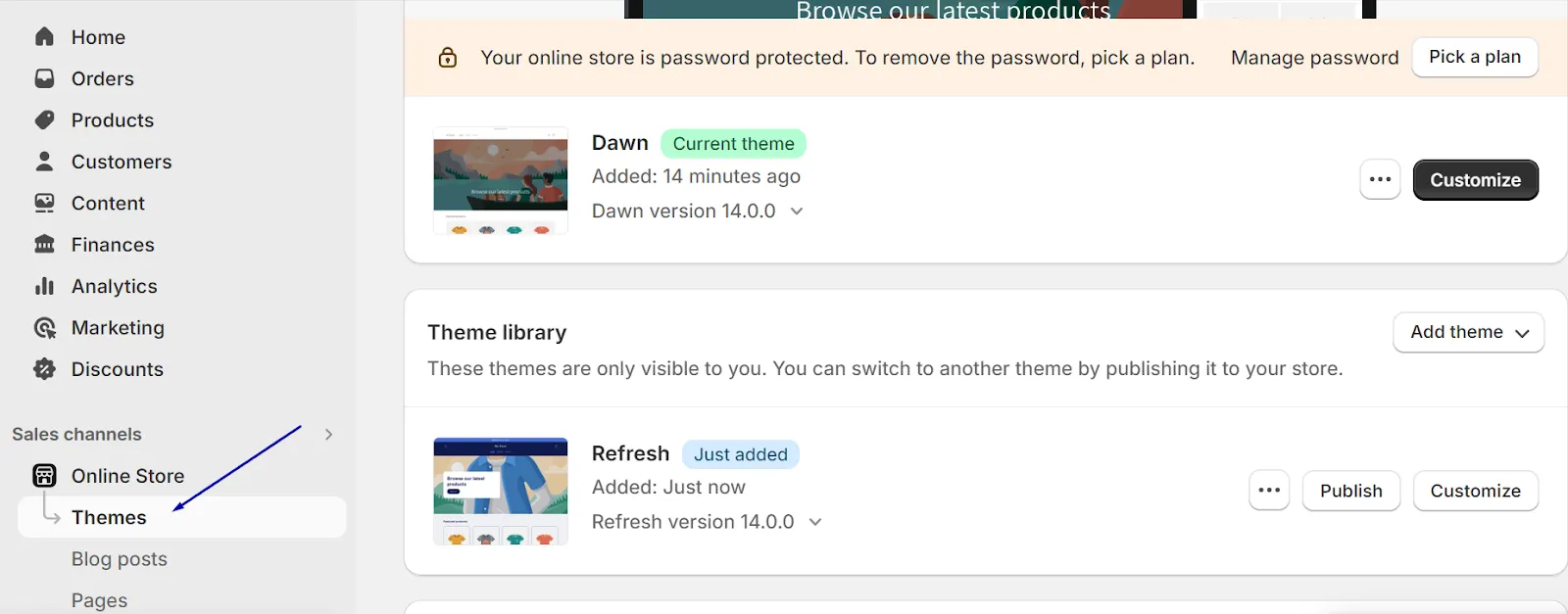
- Scroll down the section and select “Edit code”.
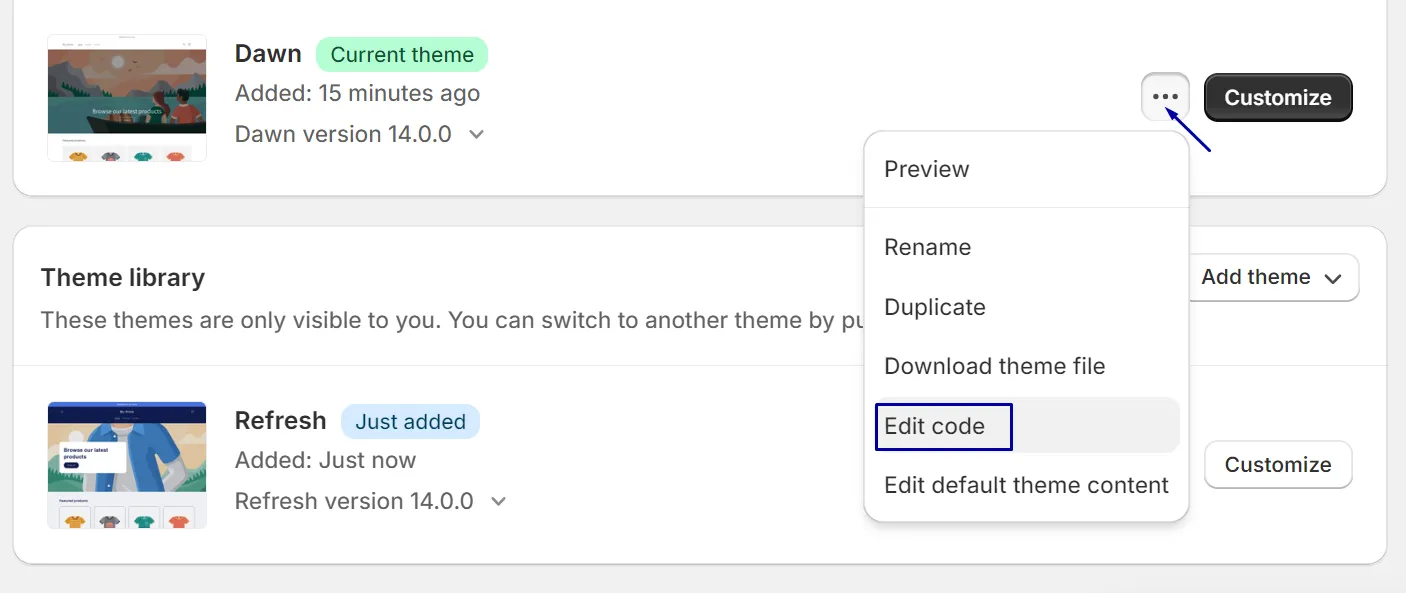
- Next, go to the “Section” area and select “Main-product.liquid.” Use Ctrl+F to search for the form ‘Product.’

* Then, add {% comment %} before the {% form 'product' ...} code.

Find the **{% endform %}** tag in your code. Then, insert the following HTML code after the **{% endform %}** tag:
{% for tag in product.tags %}
{% assign productTag = tag | downcase %}
{% if productTag contains 'https://' %}
<form action="{{tag}}">
<input type="submit" class="btn" value="Buy on Amazon">
</form>
{% endif %}
{% endfor %}
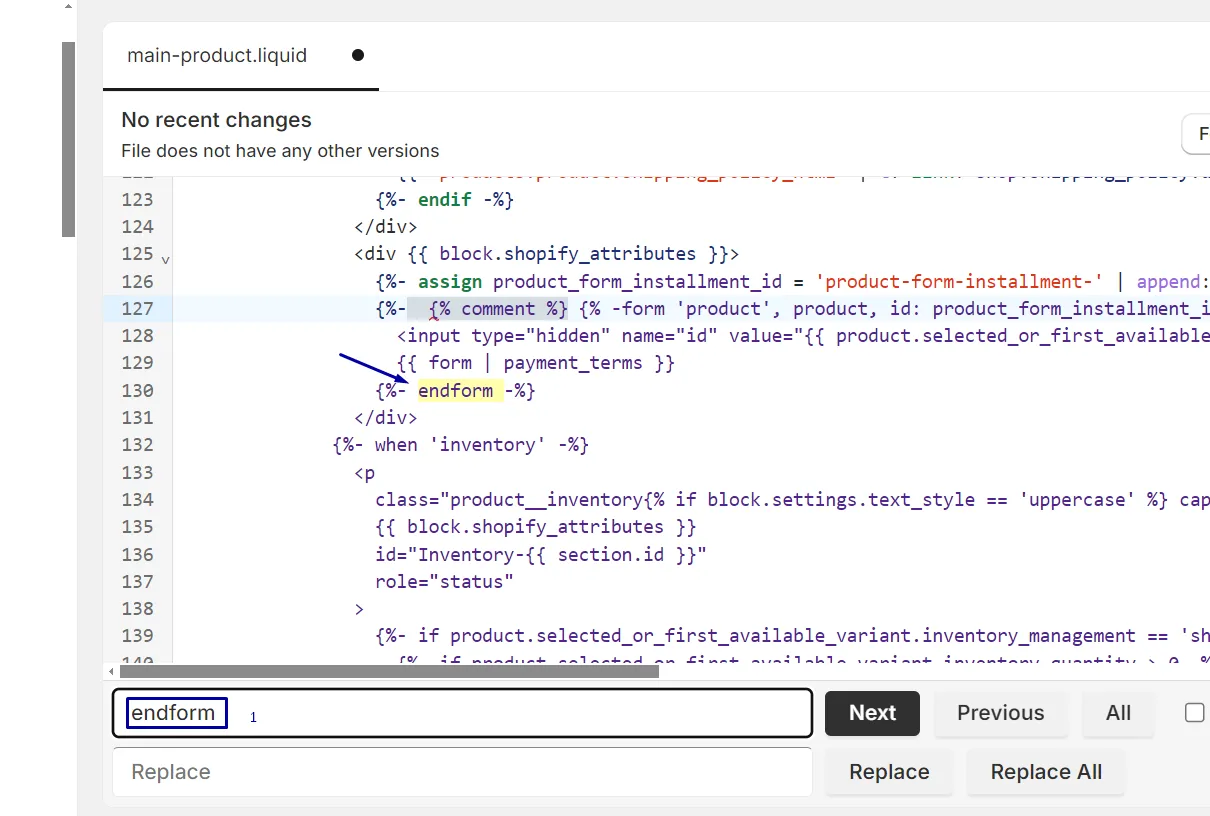
- Then click “Save” your changes.
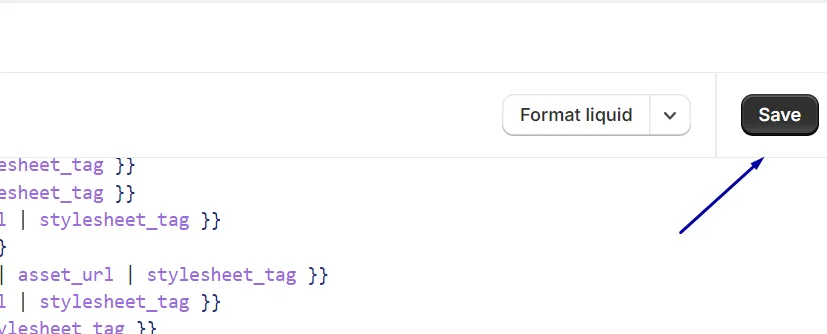
- Return to your “Add products” page and paste the affiliate link to the “Tags” section.

Step 4: Implement SEO optimization
Next, optimize your store for quick loading times, practical conversions, and broad reach. Here are a few ways to do this:
- Write compelling product descriptions. Don’t just list features – tell customers why the product is great and how it will help them.
- Make your images smaller. Optimize images to speed up your site and boost your search engine rankings.
- Implement best SEO practices to increase your store’s visibility. This includes fast load times and adding special tags to your pages.
Step 5: Plan robust marketing strategies
Promote your affiliate program to drive traffic to your product pages. Here are a few ways to do this:

- Social Media: Attract your audience by running targeted ads or sharing your affiliate program details with your social networks like Facebook, Instagram, TikTok, and Twitter.
- Affiliate Networks: These are websites that connect businesses with affiliates. ShareASale is a popular one. These websites can help you find people who want to promote your products.
- Email Marketing: If you have an email list, send out messages about your affiliate program. This encourages customers to join your affiliate marketing partnerships.
Step 6: Track your affiliate sales and traffic
In managing your Shopify affiliate marketing program, store owners should regularly track the following:
- Total and new affiliate number
- Sales figures, both overall and per affiliate
- Total payouts and individual affiliate payouts
- Payout-to-sale ratios and profit margins
Case Studies
Here are three examples of successful selling affiliate products on Shopify:
Kettle & Fire

Kettle & Fire is a successful Shopify store that sells affiliate products. They sell their bone broth and partner with other companies to offer supplements and cookware. Kettle & Fire has been featured in publications like Forbes, Business Insider, and Entrepreneur.
Death Wish Coffee

Death Wish Coffee, renowned for its high-caffeine blends, leverages an affiliate program to expand its offerings for coffee enthusiasts.
They collaborate with complementary ecommerce brands to directly promote coffee grinders, mugs, brewing equipment, and other coffee-related accessories on their website. Death Wish Coffee earns commissions on sales made through these affiliate partnerships.
Fitness Gear USA
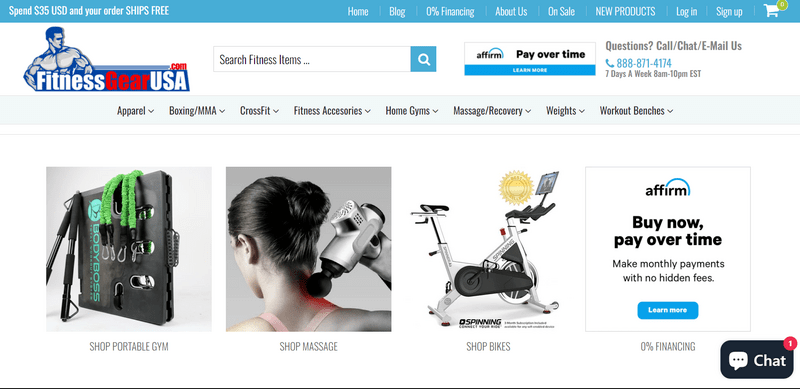
Fitness Gear USA is another example of a successful Shopify store selling affiliate products. They specialize in fitness equipment and gear. They also offer affiliate products like supplements, workout attire, and accessories. This strategy increases their revenue and helps them provide customers with a full range of fitness solutions.
Selling Affiliate Products on Shopify: 3 Key Tips for Success
Selling affiliate products on Shopify can be lucrative if you follow some key strategies.
Choosing High-Quality Products
- Select Niche Products: You should focus on a specific niche matching your target audience’s interests and look for products with a proven quality and customer satisfaction track record.
- Review Affiliate Programs: Join affiliate programs with reputable merchants who offer competitive commissions and provide excellent support to affiliates.
- Test the Products: Whenever possible, test the products yourself or gather feedback from reliable sources to ensure they meet the quality standards you want to promote.
Using Email Marketing for Promotions
- Build an Email List: First, you create an email list of subscribers interested in your niche and offer incentives like eBooks, discounts, or valuable content in exchange for email sign-ups.
- Segment Your List: Next, you should divide your email list into segments based on interests, behavior, and demographics, allowing you to send targeted promotions.
- Automation: You should implement email automation sequences to nurture leads and send follow-up emails for abandoned carts or product recommendations based on customer behavior.
mproving SEO for Affiliate Products
- Keyword Research: Research thoroughly to identify relevant and high-traffic keywords. Google Keyword Planner or SEMrush are helpful tools.
- On-Page Optimization: Optimize product pages for SEO by including relevant keywords in titles, descriptions, headers, and alt tags for images.
- Backlink Building: Build high-quality backlinks to your product pages through guest posting, influencer collaborations, and social media sharing.
- Regular Updates: Continuously update your content and product information to stay relevant in search engine results pages (SERPs).
FAQs:
Bottom Line
We believe you’ll easily find the best affiliate programs and trendy Shopify affiliates to sell in your Shopify store using the guide provided above.





